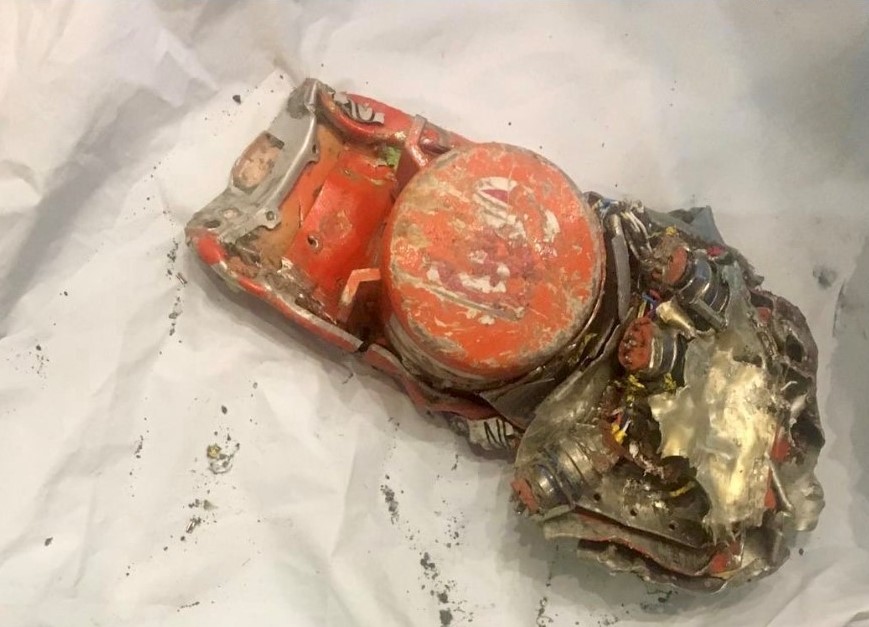French investigators have provided the first picture of the battered flight data recorder from Ethiopian Flight 302 that will help determine how long the global Boeing 737 MAX fleet remains grounded.
All eyes are on France’s Bureau d’Enquetes & d’Analyses (BEA) after the flight data and cockpit voice recorders were sent there for analysis by Ethiopian authorities.
There is some irony that the home of Boeing rival Airbus holds the key to what happens next for the MAX fleet, grounded worldwide after the second fatal crash of a Boeing MAX 8 in less than five months.
An Ethiopian team has accompanied the recorders to Paris after investigators resisted pressure from US officials for them to be taken to the US.
The Wall Street Journal reported he Ethiopians were keen to show American investigators wouldn’t have undue influence over the probe.
The BEA is due to start downloading data Friday but it is not clear how long an analysis will take.
The US National Transportation Safety Board has also sent three investigators to Paris.
US president Donald Trump, who announced the decision by the US Federal Aviation Administration to follow the rest of the world in suspending 737 MAX operations, has said he hopes Boeing resolves the situation quickly.
READ: Boeing 737 MAX disasters – what we know, and what we don’t.
The cozy relationship between Boeing and Trump prompted criticism that politics and a desire to protect The US aerospace giant played a role in the US delay in grounding the planes.
Some US politicians have called for an oversight review of the FAA’s late decision and its certification of the aircraft.
However, FAA acting administrator Dan Elwell said the decision was based on new satellite tracking data that became available and allowed on Wednesday to establish a potential link between the first crash in October involving a Lion Air plane and Sunday’s crash of Flight 302.
He said the satellite data showed similarities between the flights of the Lion Air and Ethiopian plane which, coupled with physical evidence on the ground, led to the decision.
Challenged about the issue on NPR, Elwell reiterated earlier comments that the FAA was a data-driven organization.
He acknowledged that many experts had been talking about a link between the crashes but said none had possessed the data to act on it.
“It was all conjecture and in aviation, the FAA and the US have always acted on data,” he said. “We’re a data-driven organization. We have the safety record we have today based on science, risk analysis and data.”
Elwell said the FAA had been hopeful it would get information from the black boxes sooner but they had been damaged and couldn’t be read in Ethiopia.
He said there were some lines or data from the black boxes that would confirm or deny a link between the crashes.
“Remeber if a link isn’t made, you don’t have a common thread, there is not a need for grounding,” he said.
“So once we got the data that made that relatively clear — it’s still not certain, it’s an ongoing investigation, there’s a lot more information we need to get — we got enough information to make this prudent action.”
Asked how much the agency was thinking about not harming a major American company, Elwell said the agency no longer had a dual role regulating and promoting aviation.
“It did about 30 years ago up until the ValuJet crash and then that dual role, which was part of our mandate, was ended,” he said, adding “the FAA makes safety decisions. Period.”.
He said the agency had consulted with Boeing at a technical level about the aircraft and what the company did or didn’t know.
“Consultation — absolutely that took place,” he said. “That always takes place with safety discussions and incidents but that’s it.”
The US planemaker’s stocks began to slide again in early trading on Wall Street after appearing to stabilize Wednesday night.
























